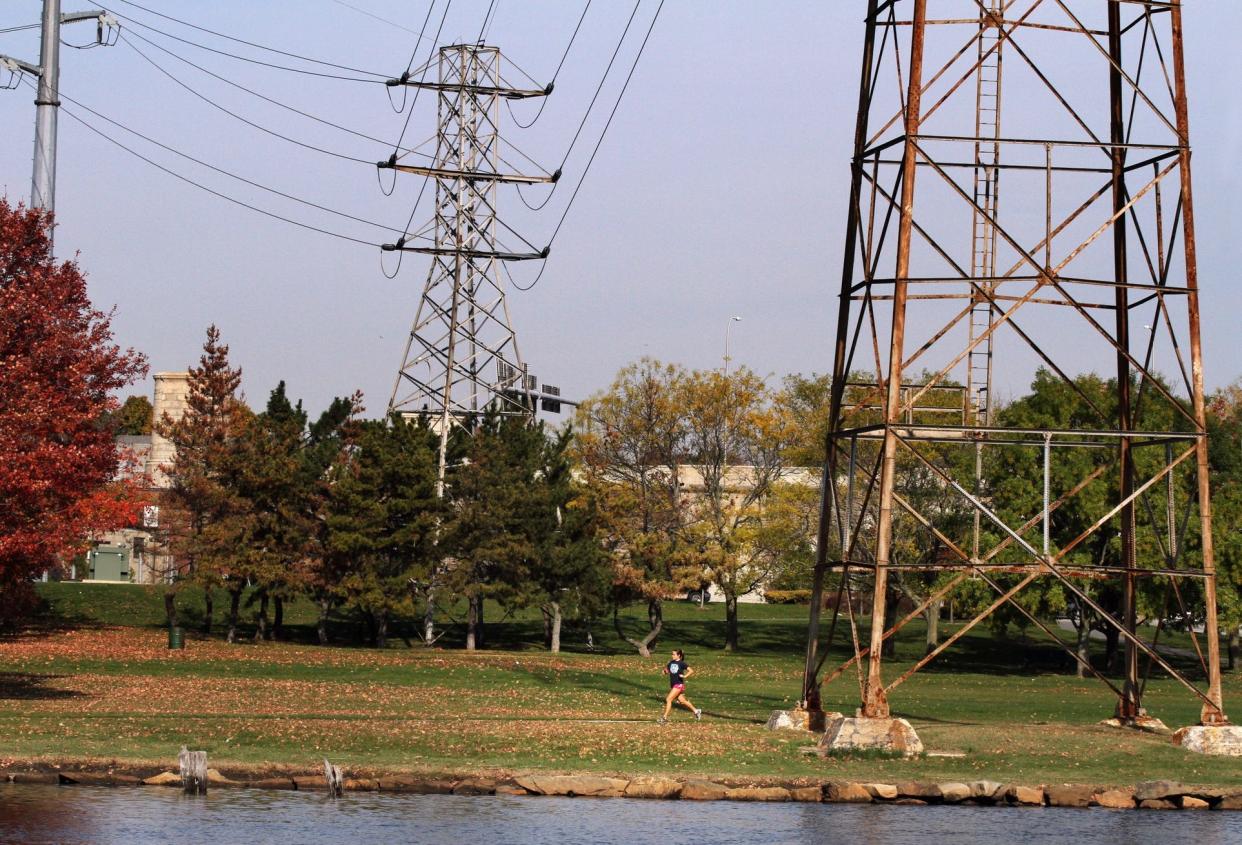Opinion/Riley and Lapides: Why aren't the waterfront power lines buried?

David Riley is co-chair of Friends of India Point Park. Sally Lapides is president of Residential Properties Ltd. Nick Cicchitelli, president of the Fox Point Neighborhood Association, and Sharon Steele, president of the Jewelry District Association, contributed to this commentary.
Over the past 20 years, 2,100 petition signers and 70 organizations have urged the state to bury the power lines on the Providence-East Providence waterfront.
Yet the massive towers and wires remain a scar across our shoreline at the head of Narragansett Bay. Other cities like Chattanooga and San Antonio buried waterfront wires decades ago, and have reaped major economic and environmental benefits. But in Providence — where attractive riverwalks welcome a million visitors a year — hulking towers and high-voltage wires despoil the Ocean State’s water views that 60 million people a year pass by on I-195.
National Grid, having consistently obstructed burial of the power lines, wants to erect new towers that would last another 100 years. Ironic, since this highly profitable multi-national corporation headquartered in the United Kingdom is spending $1 billion to bury power lines in British national parks.
The company’s indifference about the capital region’s signature natural landmark is particularly galling given its plans to leave Rhode Island, taking with it $46 million in excess profits from the offshore wind farm, characterized by the R.I. Public Utilities Commission chairman as “ripping off ratepayers.”
Now the Rhode Island Supreme Court is considering whether the R.I. Energy Facility Siting Board did its job in ordering new overhead waterfront power lines.
It did not.
The EFSB ignored its obligations to issue findings on burial’s feasibility, relying entirely on infeasibility statements by attorneys lacking engineering expertise. Even National Grid’s engineers didn’t declare it infeasible.
National Grid told the Supreme Court that burial is not feasible, even though engineers from two well-respected firms concluded that the burial project “is aligned with current industry standards” and “is constructible.” But National Grid never called them to testify at EFSB hearings.
With no independent experts’ findings on record, one of the Supreme Court justices repeatedly questioned burial’s feasibility, finally asking: “How did anyone in God’s green earth think that burial is possible?"
We urge the court to instruct the EFSB to assess qualified engineers’ feasibility findings, compare burial’s cost to its long-term benefits, and follow state law requiring that EFSB decisions “will enhance the socio-economic fabric of the state” and “not cause unacceptable harm to the environment.”
The EFSB has ignored dramatic improvements in the accuracy of horizontal directional drilling used to bury power lines, which were reported to the EFSB in 2016. It approved National Grid withdrawing $587,000 from the ratepayer burial fund to pay its engineers and attorneys to argue against burial. And it has not explained why more than half the $18 million in burial funds have earned no interest over the last 16-18 years.
The EFSB has ignored the environmental and economic benefits of burying power lines, such as increasing tourism, increasing property values, upgrading four popular waterfront parks, and enhancing recent waterfront improvements like the Newport ferry landing and Narragansett Beer pub.
National Grid’s proposal to run power lines along the Linear Park Bridge adjacent to I-195 would make them much more conspicuous than they are now. It would transform the linear park leading to the East Bay Bike Path into a utility corridor, making a mockery of state law’s mandate that EFSB decisions must cause the least possible harm to the environment’s “aesthetic and recreational value to the public.”
Officials have virtually ignored concepts like tourism, economic development, the unique appeal of waterfronts, and the role parks play as a respite from the stresses of city life during 15 years of hearings on this case. Yet these concepts are the central concerns of other states when they order the burial of highly visible, strategically located power lines like ours.
If the Rhode Island Supreme Court does not order the EFSB to do its job, National Grid will have squandered a once-in-a-lifetime chance to rid our waterfront of its unsightly power lines. And our state government — i.e., the EFSB — will be absolved of any responsibility for leaving an industrial scar etched across the face of Providence for another 100 years.
This article originally appeared on The Providence Journal: Opinion/Riley and Lapides: Burying the Waterfront Power Lines: Why hasn’t it happened?

